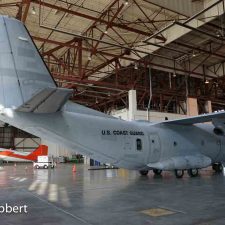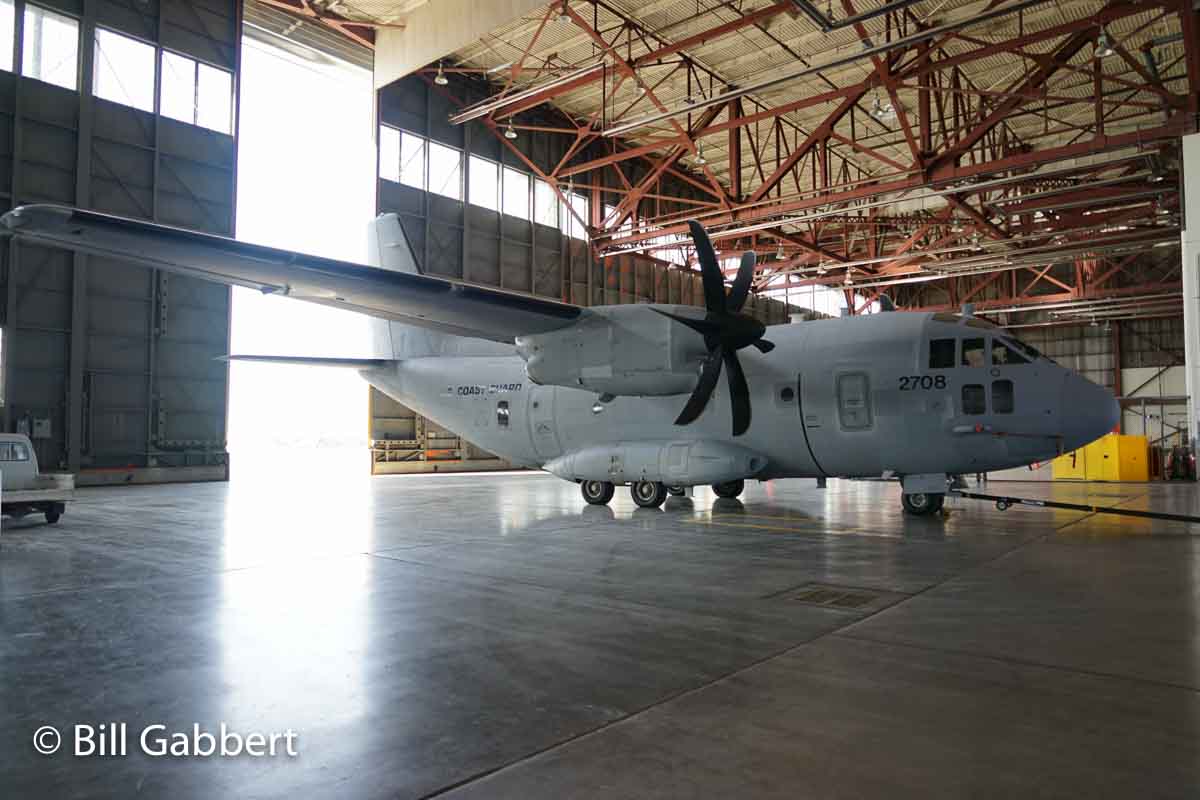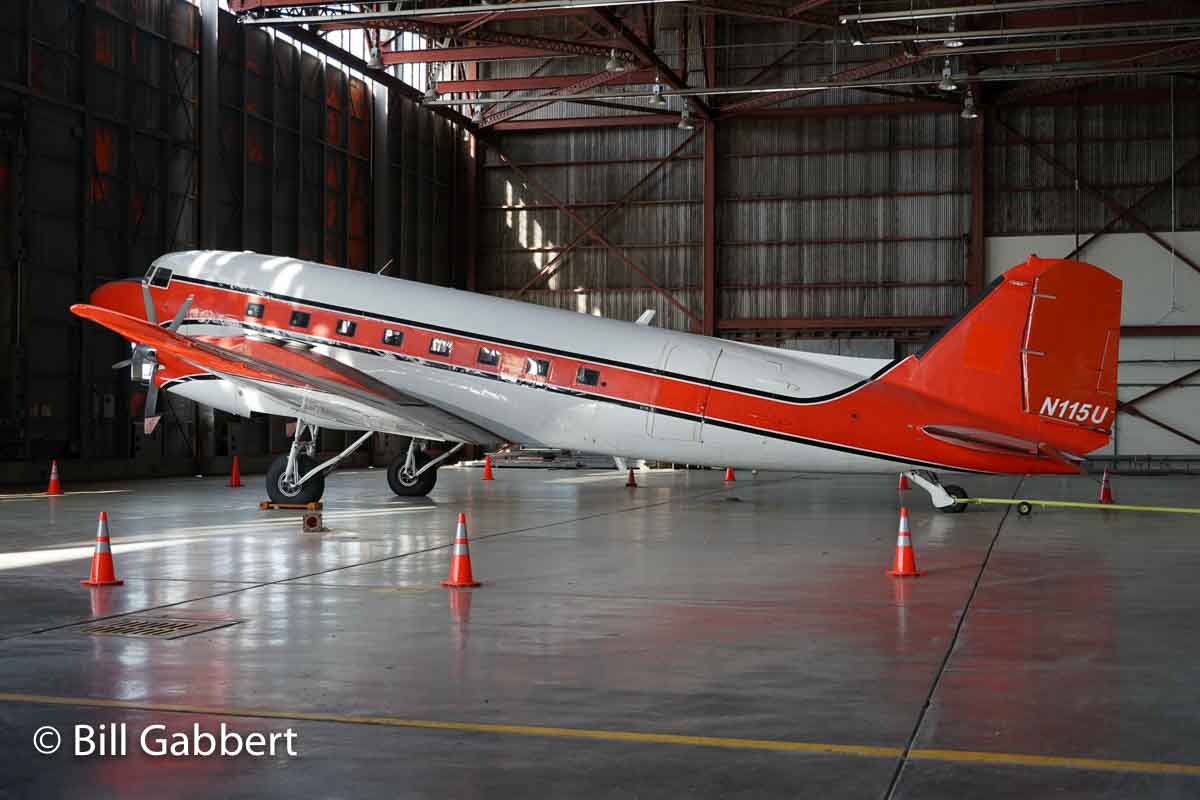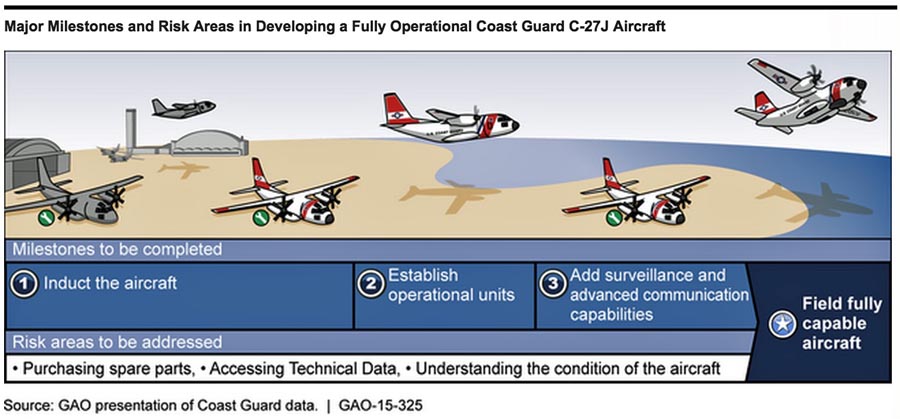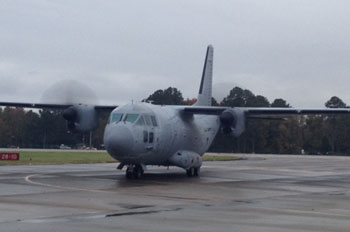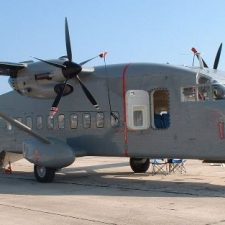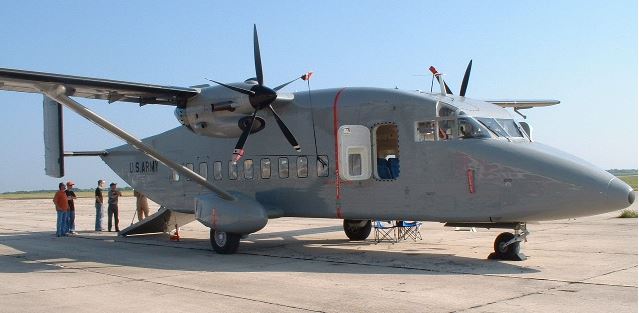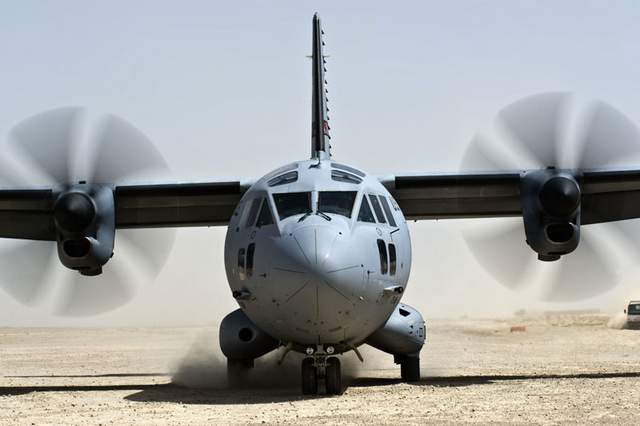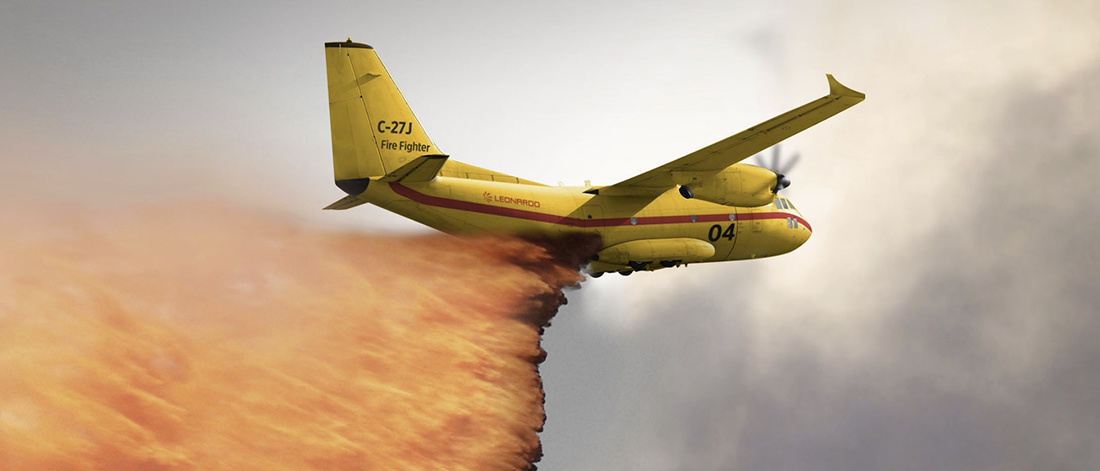
Leonardo has has arranged for a roll-on, roll-off retardant delivery system to be installed as needed in their C-27J twin engine aircraft.
It will be made by MAFFS corp/United Aeronautical, the company that now owns the intellectual property for both generations of the 3,000-gallon Mobile Airborne FireFighting Systems (MAFFS and MAFFS II) which can be slipped into a C-130. The company also owns the intellectual property for the second generation Retardant Air Delivery System, RADS2, a gravity assisted, constant-flow retardant tank system which has been successfully used in P-3s, C-130s, and other air tankers.
The new downsized version of the MAFFS will have a tank capacity of 2,000 US gallons (7,520 l.) and will have a selectable ground coverage level of 1 to 8 gallons per 100 square feet. The retardant is forced out of the tank by compressed air. Like the MAFFS II it will have emergency jettison capability, or it can discharge the entire load at coverage level 8 in two seconds. The 2,000 gallons can be dropped in either one or a series of two drops. Similar to the earlier MAFFS, the retardant will exit the aircraft through the left paratrooper “stub” door and will have a tank for foam concentrate which can be used to enhance the firefighting effectiveness of plain water if retardant is not available. No major structural modification is required to the airframe.
Leonardo says with the roll-on, roll-off capability four workers can install it on a C-27J in 90 minutes using the rear loading ramp. This would enable the aircraft to be quickly converted from an air tanker mission to hauling personnel or cargo.
The MAFFS II has two compressed air tanks, one on each side of the 3,000-gallon retardant tank, that force the retardant out of tank. A drawing of the new 2,000-gallon version shows what appears to be a single compressed air tank, on the left side.
The MAFFS II has two air compressors that sometimes are in working order which may be used to refill the air tanks. But most of the time the air tanks are refilled on the ground from a very large air compressor while the aircraft is being reloaded with retardant.
The new downsized MAFFS, we’ll call it a Mini-MAFFS for now, will not have a permanently installed air compressor. A Leonardo spokesperson told Fire Aviation that a specially configured piece of ground support equipment (GSE) will travel with the aircraft to be unloaded at the airport at which the aircraft will be returning to reload with retardant or water. The GSE’s air compressor will fill an air tank on the GSE with compressed air. When the aircraft returns to be reloaded, that air will be transferred to the air tank on the MAFFS, a process that is quicker than filling an empty tank with air directly from an air compressor.
Leonardo, based in Rome, says the C-27J has a top cruise speed of 374 mph and a max service ceiling of 30,000 feet. It is powered by two Rolls-Royce AE 2100-D2A engines.
The Forest Service commissioned a study on how the C-27J could be used by the agency if the Air Force gave them seven as they were expecting. The $54,000 study was kept under wraps until it was released in mid-2013; Fire Aviation covered it in July of that year.
Here is a portion of what we wrote at the time:
The report concluded the C-27J could carry 1,850 gallons of retardant if 3,200 pounds of unneeded equipment were removed, including flight deck armor (approximately 1,100 lbs), miscellaneous mission equipment such as litter stanchions, tie-down chains, ladders etc. (approximately 1,000 lbs), and the cargo loading system (approximately 1,200 lbs).
If a mini-MAFFS slip-in retardant system was designed for the C-27J cargo space, which is smaller than a C-130, it would hold approximately 1,100 gallons if the same excess equipment was removed. A MAFFS2 has a maximum capacity of 3,000 gallons, but frequently carries less depending on density altitude and fuel load. The mini-MAFFS would not have an air compressor, therefore requiring the aircraft to depend on air compressors being prepositioned at air tanker bases. The USFS has six mobile air compressor systems that were built to support the original MAFFS, but the latest generation, MAFFS2, has an onboard air compressor.
[With the retardant system removed] smokejumpers could exit the C-27J through the two side doors or the aft ramp. Depending on how the aircraft was configured, it could transport between 24 and 46 jumpers.
[If used to transport firefighters] according to the report, the aircraft configuration can be changed and fitted with standard outer and center seating to accommodate 68 passengers with limited personal equipment plus 2 loadmasters.
The aircraft could carry between 12,222 and 25,353 pounds of cargo.
We asked Leonardo how their C-27J Firefighter is able to carry 2,000 gallons in a MAFFS-type system when the Forest Service study said it could only carry about 1,100 gallons. The spokesperson explained there were several differences between the US Air Force C-27J from a decade ago and the version produced now called C-27J Next Generation:
- The Next Gen has significant modifications in terms of avionics, aerodynamics, and structure. In addition, the basic configuration of the aircraft “does not include the peculiarities of the USAF version, which implies weight savings and payload increase.” Some of the newer avionics are lighter.
- New winglets have reduced the drag while improving the overall performances of the aircraft.
- Structural modifications have increased the Zero Fuel Weight of the aircraft and consequently its payload.
US Forest Service sought C-27Js for multi-use
In 2012 a movement for the US Forest Service to acquire C-27Js as a multi-use aircraft began to catch fire. Three U.S. Senators introduced a bill that would transfer 14 Air Force surplus C-27J Spartan aircraft to the U.S. Forest Service to be used as air tankers and other purposes. Senators John McCain (R-AZ), Senator Bill Nelson (D-FL), and Senator Diane Feinstein (D-CA) introduced legislation known as the Wildfire Suppression Aircraft Transfer Act of 2012 (S. 3441) “to help replenish the agency’s aging airtanker fleet”.
The idea was “To modernize the air tanker fleet,” said Senator McCain. “We have an opportunity to take the C-27J, an aircraft the Pentagon no longer wants, and give it to the Forest Service to enhance aircraft safety and lower existing maintenance costs. The C-27J should be kept in the service of the American people to help our brave fire crews, rather than sit in an airplane boneyard.”
The bill died, but the concept held on for a while.
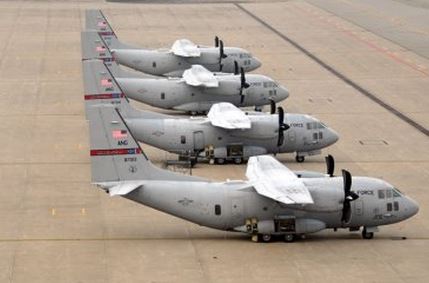
In late 2013 the Air Force began retiring their C-27Js and moving them to the aircraft boneyard at Davis-Monthan Air Force Base in Arizona.
On November 4, 2013 the U.S. Forest Service awarded an aircraft engineering support services contract to Aeronautica. It required the contractor to have experience as an engineer with the G222, C27A or C27J. It was also necessary for the contractor to have a Designated Engineering Representative on staff that was fluent in Italian. Obviously the FS was certain they would get a fleet of Air Force C-27J aircraft.
That same month, Senator McCain, after a seismic shift in his plan to send the C-27Js to the Forest Service, wrote into the National Defense Authorization Act for 2014, that instead:
- The Coast Guard would get the C-27Js.
- Seven old Coast Guard HC-130H aircraft would be converted to air tankers by the Air Force, then transferred to the Forest Service. (After several years, the FS lost interest in the HC-130H which resulted in Congress passing another law to instead give the aircraft to the California Department of Forestry and Fire Suppression. They MAY begin to see actual service over fires in 2023, unless there are still more delays.)
- The Forest Service would also get up to 15 Short C-23B+ Sherpa aircraft to be used in fire management. Some of them are being used now by smokejumpers.
The National Defense Authorization Act for 2014 passed in December, 2013.

